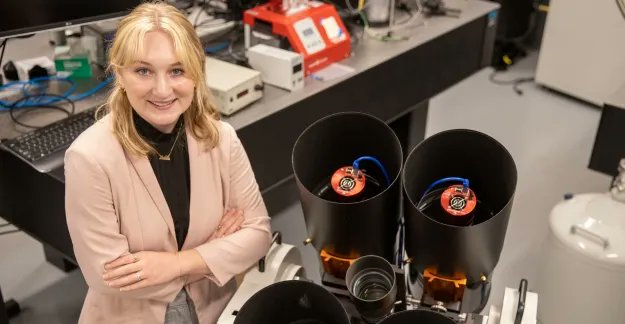SpaceX’s Starlink satellite system has been in the news lately for both good and ill. The “Mega-constellation” of around 2,800 satellites added another 53 satellites to its roster just last week. But while it might one day provide high-speed internet for the whole of humanity, it is already causing a massive headache for one particular slice of humanity – astronomers. Starlink satellites are reflective due to the solar panels they need to power themselves.
This is particularly bad early in the evening and just before dawn, when the sun alights on these high-in-the-sky panels before the Earth itself is lit up. But so far, only naked-eye observations have tracked the satellites on their course through the sky, except for a team of students from the University of Arizona. They recently published a peer-reviewed paper on their collected data of a series of Starlink satellites using a home-grown sensor.
Starlinks are undeniably easy to see at near dusk and dawn with the naked eye. They can be seen streaking across the sky at a speed that looks like a plane moving slightly faster than normal. But to an astronomer, these bright light sources are an absolute nuisance.
Typically, astronomy research, and much astrophotography more generally, requires long exposure times, meaning that the lens of the telescope must be continually exposed to the light it is trying to capture for long periods, typically hours. If a Starlink satellite happens to streak across the sky at that point, the exposure is ruined. The astronomer will have to either start again or attempt to eliminate the captured data with the satellite, which would most likely occur as a streak of light on the image.
There is no shortage of articles bemoaning this side effect of the development of the space economy. SpaceX itself is well aware of the problem, having devised several methods of lowering its satellite’s brightness profiles, including using darker materials and even a completely separate visor floating alongside it. The first solution, while it decreased the brightness of the satellite by a magnitude of 4.6, also caused the satellite to heat up to an unsustainable level and was thus abandoned. The visor solution, known as VisorSat, is what all current Starlink models, including the 53 launched last week, are currently constructed as.
Despite all the consternation these satellites have caused, no one has yet managed to quantify the data on the brightness and orbital path of these satellites. Astronomers have had to rely on naked eye observations and a government tracking resource called the Space Track Catalog. So a team of students at the University of Arizona, with help from professors in charge of the Space Domain Awareness lab, took it upon themselves to come up with better data.
But they ran into a problem when collecting that data. Traditional astronomical observational equipment is not well suited to fast-moving (and bright) satellites. That’s why people are upset about them in the first place. So the students invented one, using a small sensor with a camera lens.
They then tracked 61 satellites with 353 different measurements over two years and compared their results against the predicted values found in the Space Track Catalog. The results were striking – their data only differed by 0.3 arcseconds from the catalog itself. Most likely, that difference, which is minuscule in astronomical terms, is due to data lag in the government’s estimates, which are just that – estimates. But it also means there is a relatively accurate source of truth for astronomers who are interested in saving themselves the pain of having their image ruined by a satellite.
There are sure to be plenty of those. One of the team members estimates that the full Starlink mega-constellation, which will total around 42,000 satellites, could negatively impact as many as 30% of all telescope images. That is a potentially devastating blow to a field that, until this point in history, only had to worry about the weather in their data collection plans. But scientists are nothing if not inventive, so there will undoubtedly be some way to deal with this problem that will still allow humans to expand out into space. Knowing where not to look is undoubtedly a step in that direction.
Learn More:
UA – As reflective satellites fill the skies, UArizona students are making sure astronomers can adapt
Halferty et al. – Photometric characterization and trajectory accuracy of Starlink satellites: implications for ground-based astronomical surveys
UT – Starlink Satellites Are Still Bright
UT – 20% of Twilight Observations Contain Satellite Passes
Lead Image:
Grace Halferty, lead author of the paper, with the photometry instrument she and others help to build.
Credit – Kyle Mittan / University Communications

